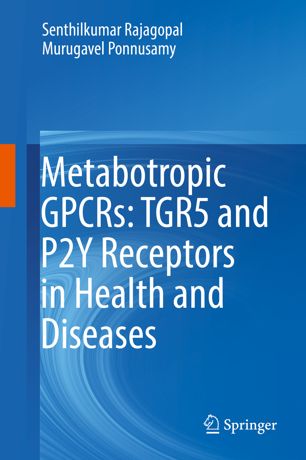Metabotropic GPCRs: TGR5 and P2Y Receptors in Health and Diseases 2018
دانلود کتاب پزشکی GPCR های متابولیک: گیرنده های TGR5 و P2Y در سلامت و بیماری
| نویسنده |
Murugavel Ponnusamy, Senthilkumar Rajagopal |
|---|
| تعداد صفحهها |
76 |
|---|---|
| نوع فایل |
|
| حجم |
3 Mb |
| سال انتشار |
2018 |
89,000 تومان
این کتاب درک کنونی را در مورد دو GPCR که در همه جا بیان می شود، یعنی گیرنده پورین جفت شده با G نوع 2 (P2Y) و گیرنده اسید صفراوی جفت شده با تاکدا G (TGR5) ارائه می دهد. گیرنده های جفت شده با پروتئین G (GPCRs) بزرگترین خانواده پروتئین ها هستند که در اکثر پاسخ های سلولی نقش دارند. دو زیر خانواده گیرنده نقش عمده ای در بسیاری از عملکردهای فیزیولوژیکی و همچنین در بسیاری از شرایط پاتولوژیک دارند. این کتاب به روز رسانی در مورد عملکردهای فیزیولوژیکی، مسیرهای سیگنالینگ و مکانیسم های تنظیمی گیرنده P2Y و TGR5 ارائه می دهد. علاوه بر این، این کتاب یک مرور کلی از ناهنجاری های گیرنده P2Y/TGR5 و سهم آنها در ایجاد و پیشرفت شرایط بیماری ارائه می دهد. همچنین عوامل فیزیکی، شیمیایی و دارویی موجود در حال حاضر را پوشش می دهد که دو خانواده گیرنده و پیامدهای درمانی آنها را در اختلالات مربوط به P2Y و TGR5 هدف قرار می دهند. این کتاب منبع ارزشمندی برای مبتدیان و محققین است تا حوزه به سرعت در حال پیشرفت اعضای خانواده GPCR را دنبال کنند.
This book will provide current understandings about two ubiquitously expressed metabotropic GPCRs, G-coupled purinoreceptor type 2 (P2Y) and Takeda G-protein-coupled bile acid receptor 5 (TGR5). G protein coupled receptors (GPCRs) are the largest family of proteins implicated in majority of cellular responses. The two receptor sub-families play a central role in many physiological functions as well as in many pathological conditions. This book offers up-to-date information on the physiological functions, signaling pathways and regulatory mechanisms of P2Y and TGR5 receptors. In addition, this book provides a comprehensive overview about the abnormalities of P2Y/TGR5 receptors and their contribution in the development and progression of pathological conditions. It also covers the currently available natural, chemical and pharmacological agents targeting these two receptor families and their therapeutic implications in P2Y and TGR5 associated disorders. This book is a valuable source for beginners and researchers to follow the rapidly progressing field of these two GPCR subfamily members.




